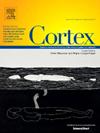An exploration of complex action stopping across multiple datasets: Insights into the mechanisms of action cancellation and re-programming
IF 3.3
2区 心理学
Q1 BEHAVIORAL SCIENCES
引用次数: 0
Abstract
A long history of psychological experiments has used stop signal paradigms to assess action inhibition. Recent studies have investigated complex stopping behaviours, such as response-selective stopping where only one component of a bimanual action requires cancellation. A current emphasis has been to use electromyographical (EMG) recordings to assess the temporal dynamics of action inhibition at the level of the muscle, beyond those based solely on observable behavioural events. Here, we combine EMG and behavioural data from 17 cohorts of healthy younger and older adults yielding over 42,000 response-selective stopping trials, providing unique insights into this emerging field. Expanding from past research in this area, our robust single-trial EMG analyses permit detection of cancelled (partial) and response-generating EMG bursts in both hands, revealing substantial overlaps in the distributions of timing of action cancellation and re-programming. These findings are consistent with recent experimental and modelling evidence, suggesting that response-selective stopping is best modelled as two independent processes: a discrete bimanual stop and initiation of a new unimanual response. This overlap may be incompatible with the recent pause-then-cancel model, and more consistent with a broader “pause-then-retune” account, where a slower process mediates any action updating, not just cancellation. Moreover, this independence means that cancellation can happen at any time during motor planning and execution, against the notion of an observable “point of no return” in terms of EMG and behavioural measures. We also discuss best practices for the analysis of EMG data and indicate how methodological aspects, such as choosing appropriate reference time points, can influence the outcomes and their interpretation.
跨多个数据集的复杂动作停止的探索:对动作取消和重新编程机制的见解
长期以来,心理学实验一直使用停止信号范式来评估行动抑制。最近的研究调查了复杂的停止行为,如响应选择性停止,其中只有一个手动动作的组成部分需要取消。目前的重点是使用肌电图(EMG)记录来评估肌肉水平上动作抑制的时间动态,而不仅仅是基于可观察到的行为事件。在这里,我们结合了来自17个健康年轻人和老年人队列的肌电图和行为数据,产生了超过42,000个反应选择性停止试验,为这一新兴领域提供了独特的见解。从过去在该领域的研究扩展,我们强大的单次试验肌电图分析允许检测双手中取消(部分)和响应生成的肌电图爆发,揭示了行动取消和重新编程时间分布的大量重叠。这些发现与最近的实验和建模证据一致,表明反应选择性停止最好被建模为两个独立的过程:一个离散的双手动停止和一个新的单手动响应的启动。这种重叠可能与最近的暂停-然后取消模型不兼容,而与更广泛的“暂停-然后返回”帐户更一致,其中较慢的流程调解任何操作更新,而不仅仅是取消。此外,这种独立性意味着在运动规划和执行过程中,取消活动可以在任何时候发生,这与肌电图和行为测量中可观察到的“不归点”的概念相反。我们还讨论了肌电图数据分析的最佳实践,并指出方法方面(如选择适当的参考时间点)如何影响结果及其解释。
本文章由计算机程序翻译,如有差异,请以英文原文为准。
求助全文
约1分钟内获得全文
求助全文
来源期刊

Cortex
医学-行为科学
CiteScore
7.00
自引率
5.60%
发文量
250
审稿时长
74 days
期刊介绍:
CORTEX is an international journal devoted to the study of cognition and of the relationship between the nervous system and mental processes, particularly as these are reflected in the behaviour of patients with acquired brain lesions, normal volunteers, children with typical and atypical development, and in the activation of brain regions and systems as recorded by functional neuroimaging techniques. It was founded in 1964 by Ennio De Renzi.
 求助内容:
求助内容: 应助结果提醒方式:
应助结果提醒方式:


